Rodents
Rat and mouse are rodents. The common species of commensal rodent in Hong Kong are:
- Rattus norvegicus (Rn), sewer rat; also known as norway rat.
- Rattus rattus (R2), house rat; also known as roof rat.
- Mus musculus (Mm), mouse.
Special Features about Rodents
- social animal
- nocturnal
- good climber, especially for Rattus rattus.
- good jumper
- range of movement: 30-50m for rats, 5-10 m for mice
- good swimmer
- can dive
- rat takes 15-30 gm food and consumes about 30 gm water daily,
- mouse takes only 3 gm of food and small amount of water everyday.
- 5-8 litters per year, 5-14 per litter
- average life span is 1 yea
Rodent-borne Diseases
Rodents are carriers of viral, rickettsial and bacterial diseases. The causative agents could enter our body by four different ways:
- through the ectoparasites of rat like fleas, ticks and mites
- by food or water contaminated by rodent excreta
- through direct contact with rodent excreta
- by rat bite
Some of the common rodent-borne diseases are:
- Plague
- a disease of rodents caused by the bacterium, Yersinia pestis
- rat fleas feeding on a bacteria-infected rodent would transmit the disease to the next host (rat or human) through biting
- Urban typhus
- a rickettsial disease transmitted by rat fleas
- flea faeces are rubbed or scratched into the wound or abraded skin
- also possible by the inhalation of dust or ingestion of food contaminated with flea excreta
- Spotted fever
- a rickettsial disease transmitted by rickettsia-infected ticks feeding on human through biting
- larvae feed on rodents; adults feed on dog as their host
- Scrub typhus
- a rickettsial disease transmitted by rickettsia-infected mites feeding on human through biting
- transmitted by mites amongst rodents in scrubby areas
- accidental infections in man: campers, hikers
- Personal Preventive Measures for Scrub Typhus While Hiking/Camping
- Wear long trousers and clothes with long sleeves
- Avoid resting in scrubby area or on grasses
- Apply insect repellents to exposed skin surfaces
- Do not leave clothes in scrubby area or on grasses
- Hantavirus Infection
- a disease of rodents caused by Hantaan virus
- transmitted by air-borne droplets and faecal particles of infected rodent under poor ventilation
- Rat-bite fever
- a disease of rodent caused by bacteria
- usually transmitted to human through rat biting
Rodent Prevention and Control
Rodent Survey
- Find out the rodent species, estimated rodent population, rodent harbourages, food attraction for the rodent and activity range of the rodent.
- Assist in planning of rodent disinfestation operation and long-term rodent prevention measures.
Rodents provide the essential link in the spread of rodent-borne diseases which are of public health importance. Our Department has carried out study on rat flea and rodent infestation survey to monitor the situation of flea and rodent infestation in 18 districts.
Rat Flea Survey
The number of rat flea collected from the rat examined per each rat examined gives Rat-flea Index (Number of rat flea collected from the rat examined/Total number of rat examined = Rat-flea Index).
| Rat-flea Index = | No. of rat flea collected from the rat examined |
| Total no. of rat examined |
Please click here for the latest information on rat-flea index
It has been reported from World Health Organization (WHO) that a Rat-flea Index of greater than 1 represents an increased potential plague risk for human. Although Hong Kong does not have human plague transmission since the middle of 1920s, our Department would carry out flea and rodent disinfestation operation in places with Rat-flea Index greater than 1.
Rodent Activity Survey (RAS)
Since 2000, the Food and Environmental Hygiene Department (FEHD) has been conducting the Rodent Infestation Survey (RIS) regularly by setting baits in designated survey locations to monitor rodent infestation. The ratio of the baits gnawed by rodents to the number of baits collected from the survey location generates the Rodent Infestation Rate (RIR). The RIR was regularly published for the public's reference. FEHD also planned for anti-rodent work based on the survey results. Please click here for survey results between 2013 to 2023.
After reviewing the methodology and the availability of new tools, from 2024 onwards, thermal imaging cameras in association with artificial intelligence technology has been fully adopted to measure rodent activities by replacing the traditional census baiting method. In comparison to the survey method that relies on census baiting method, the new method takes a more proactive approach to record the rodent activities with more comprehensive coverage, higher sensitivity and lower risk of being interfered by environmental factors, allowing a more accurate reflection of rodent activities.
In consideration of the rodent habits, under the new survey method, the rodent activities will be recorded by means of thermal images captured at every two-minute interval from 1900 to 0700 hours for three consecutive nights. The survey in 2024 covers public areas of which the pest control services are being provided by FEHD. Starting from 2025, the FEHD has extended the survey to cover public rental housing estates managed by the Housing Department as well as parks and recreational facilities managed by the Leisure and Cultural Services Department, making the survey more representative. When conducting the survey, the FEHD will take into account a basket of factors, such as rodent-related complaint figures which have been confirmed upon investigation, the number of live and dead rodents caught, inspection results, the views from local communities, etc., to identify locations with potential rodent problems in each district to form a sampling frame. During each survey, based on factors such as geographical distribution and relevant data, approximately 120 locations will be selected from the sampling frame through stratified sampling for installation of thermal imaging cameras, so as to effectively deploy resources and ensure the representativeness of the sampled locations. The survey is conducted on a half-yearly basis. For each round of the survey, about 2,300 locations with rodent infestation risks are selected for installation of thermal cameras to record rodent activities.
FEHD will calculate the “Rodent Absence Rate (RAR)” for each district, which is the portion of time slots in which rodents are not detected during the whole period of surveillance. It is calculated by the following formula:
| RAR = | Number of snapshots with no rodents detected | X 100% |
| Total number of snapshots taken |
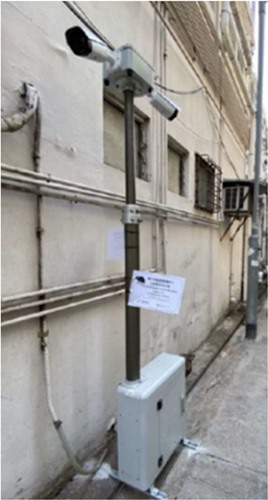
Thermal imaging camera set
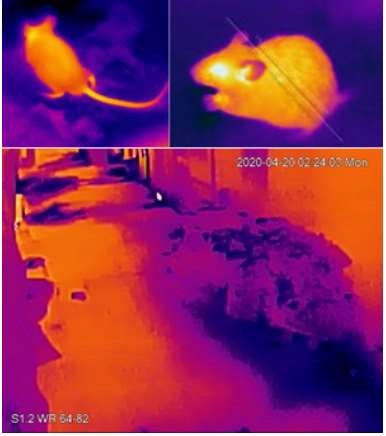
Using thermal imaging cameras for detection of rodent activity
FEHD will regularly publish the RAR of each district. With reference to the survey results, FEHD will collaborate with relevant departments to plan for anti-rodent work.
The RAR serves to reflect the situation of the locations infested with rodents. If no signs of rodent infestation are detected by thermal imaging cameras at a location, the data of that non-infested location will not be included in the calculation of RAR for the relevant district. The survey results of each round of the RAS will be analysed, and the locations for installing thermal imaging cameras will be adjusted as appropriate in the following round of the RAS based on the analysis findings. Given the dynamic nature of the situation of survey locations, minor fluctuations of the overall RAR are expected for different survey periods.
The RAR is a useful indicator that enables the FEHD to effectively deploy resources and implement targeted rodent prevention and control measures according to the RAS results. Specifically, the FEHD will:
- analyse the spatial and temporal distribution of rodents shown in the thermal images captured by thermal imaging cameras at locations with lower RARs to obtain a clear picture of rodents' activities and their dispersal routes at such locations;
- deploy resources from locations with higher RARs to those with lower RARs, and carry out suitable measures to strengthen the rodent prevention and control work at the locations concerned, which include:
- redeploying pest control teams to strengthen the daytime rodent prevention and disinfestation work for better resource allocation and efficiency;
- stepping up rodent trapping operations by overnight rodent control teams at locations with lower RARs;
- entering nearby venues and premises for investigation of the source of rodent infestation. If premises are found to be infested with rodents, the FEHD will intervene and, if necessary, deploy staff to the premises concerned for vermin disinfestation;
- conducting health education and taking enforcement actions at nearby food premises and private buildings to ensure proper waste disposal;
- strengthening street cleansing services and combating illegal refuse dumping in the vicinity; and
- inviting nearby food premises to participate in the scheme of placing large-size waste containers in rear lanes and urging the premises to step up rodent prevention and control, with a view to improving the environmental hygiene of rear lanes.
Please click here for the latest results of Rodent Activity Survey
FEHD adopts an integrated approach in monitoring rodent infestation. Apart from making reference to the RAR, the frontline staff of FEHD will also conduct on-site rodent assessment to evaluate the degree of rodent infestation during regular inspections. Targeted rodent prevention and control actions will also be implemented taking into account complaints and views from the local community and residents. Moreover, management of housing estates, hospitals, schools, construction sites and other venues or properties are advised to take specific measures to monitor and contain rodent problems in their own properties once rodent infestation is detected.
To ensure the accuracy of survey results, members of the public are advised not to disturb the thermal imaging cameras set.
Rodent Control
- Direct disinfestations
- Use poisonous bait or traps
- Temporary effect
- Stomach poison
- Mix rodenticide with bait for rodent consumption
- The rodenticides used by our department are chronic anti-coagulants (vitamin K as the anti-dote)
- The anti-coagulants take 4-5 days to give effects
- Traps
- Cage trap
- Snap trap/break back trap
- Fundamental control
Improve the sanitary condition of the environment and deprive rodents of :
- Food
- Harbourage
- Passages
Rodent prevention
- Eliminate harbourages for rodents and confine the rodent activity area for enhancing the rodent disinfestations work
- Prevent re-infestation of rodent
Disposal of dead rodents
The following procedures can be used for handling dead rodents found:
- using tools such as tongs to put the dead rodents into a tough plastic bag (e.g. rubbish bag);
- spraying the carcasses with general household disinfectant or diluted bleaching solution until they are soaked thoroughly;
- sealing the bag tightly and placed it into another plastic bag. The second plastic bag should also be sealed;
- putting the bagged material properly in covered rubbish bin or disposing of it to the nearest refuse collection point.
When handling dead rodents, attention should be paid to personal and environmental hygiene. Wear gloves and face mask, if necessary, when handling dead rodents and avoid direct contact with them. All areas, clothes and items contaminated by the dead rodents should be disinfected thoroughly using general household disinfectant or diluted bleaching solution. Before taking off gloves, wash them with water and then cleanse with general household disinfectant or diluted bleaching solution. Hands should be washed thoroughly with soap and water after removing the gloves.
Figure
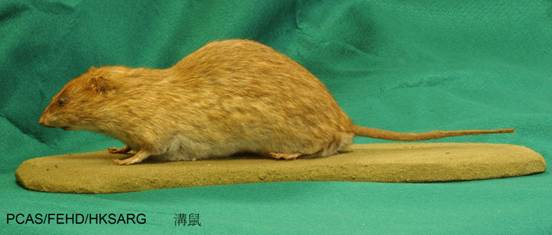
Rattus norvegicus, body length (head to tail) 34-46cm, body weight 150-600g
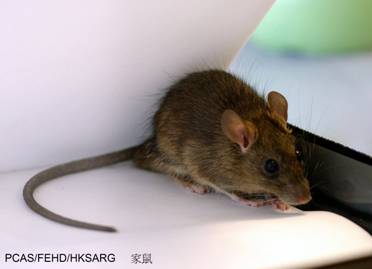
Rattus rattus, body length (head to tail) 35-46cm, body weight 80-300g
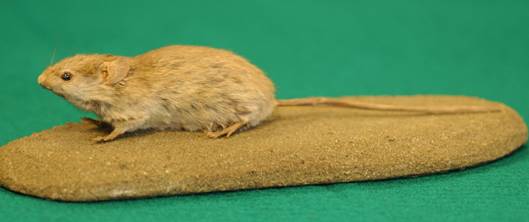
Mus musculus, body length (head to tail) 12-21cm, body weight 10-21g

Xenopsylla cheopis (Rat Flea), about 2-4mm long
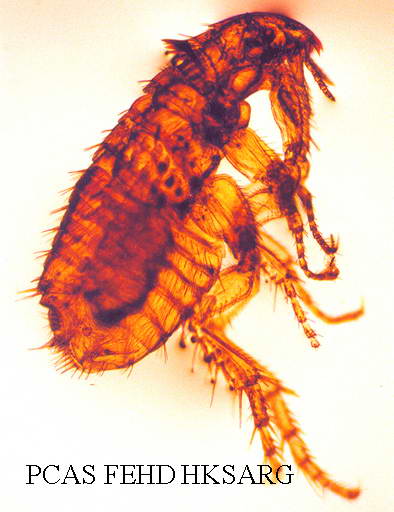
Ctenocephalides felis, about 2-4mm long
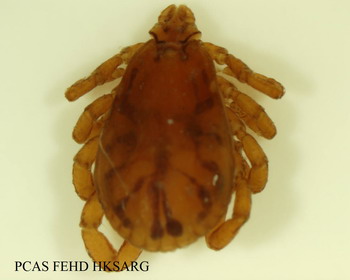
R. sanguineus, a tick, is a rodent-borne disease vector for the transmission of Boutonneuse fever
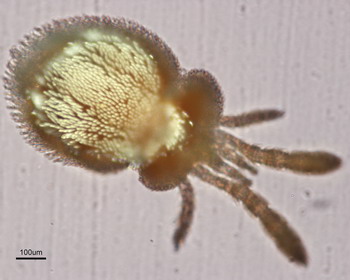
L. deliense, a mite, is a rodent-borne disease vector for the transmission of scrub typhus